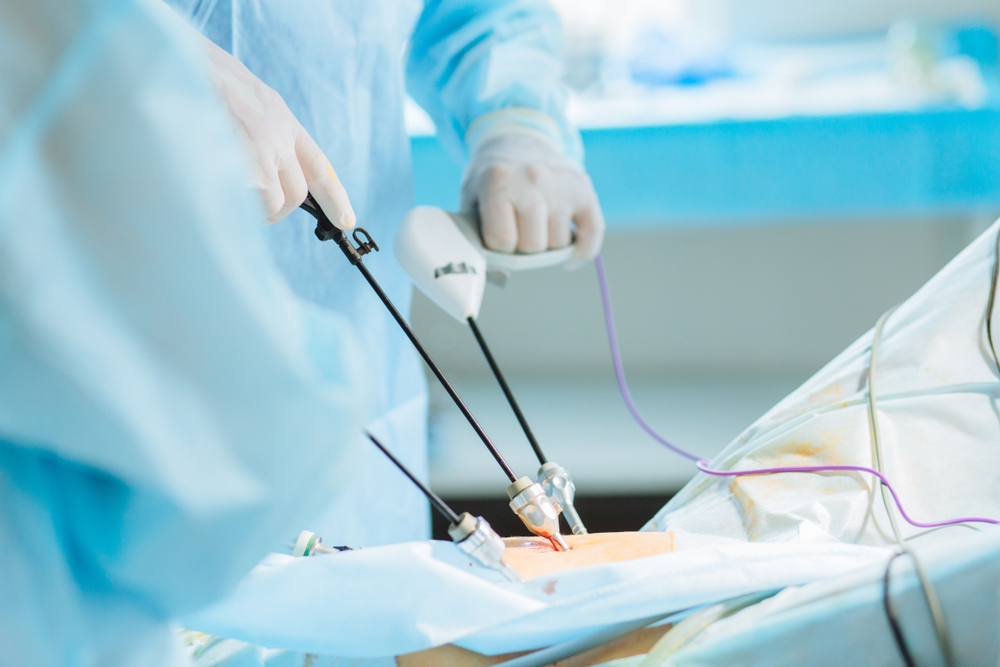Laparoscopic Surgery refers to a minimally invasive surgical technique that allows surgeons to perform operations using small incisions, instead of the larger cuts required in traditional open surgery. In laparoscopic surgery, a small camera (laparoscope) is inserted through a tiny incision to provide a clear view of the internal organs, while other small instruments are used to perform the surgery. This technique has become widely popular due to its many benefits over traditional surgery, including faster recovery, less pain, and fewer complications.
Minimally Invasive Approach
The most significant benefit of laparoscopic surgery is its minimally invasive nature. Unlike traditional open surgery, which involves making large incisions to access the internal organs, laparoscopic surgery requires only small cuts. This approach leads to:
- Less tissue damage: Since the incisions are small, there is significantly less damage to the surrounding tissues. This reduces the risk of complications and minimizes trauma to the body.
- Fewer infections: Smaller incisions mean there is a lower risk of infection. The reduced wound exposure helps the body heal faster and more efficiently.
Faster Recovery
One of the most appealing advantages of laparoscopic surgery is the quick recovery time. With traditional surgery, patients may need several weeks of rest and recovery in the hospital due to large incisions and the trauma caused by the procedure. However, laparoscopic surgery significantly reduces recovery time for patients:
- Shorter hospital stay: Most laparoscopic procedures allow patients to leave the hospital within a day or two after the surgery, compared to the week-long hospital stay required for traditional surgery.
- Return to normal activities: Patients who undergo laparoscopic surgery can usually resume their normal activities, including work and exercise, in a matter of days or weeks, depending on the procedure. This is much faster than with traditional surgery, where recovery can take several weeks or even months.
Reduced Pain and Discomfort
Pain management is an essential aspect of surgery, and laparoscopic surgery offers considerable advantages in this area. Because smaller incisions are made, the overall pain and discomfort experienced by the patient is much lower compared to traditional surgery. Patients typically require fewer pain medications and experience less post-operative pain, which leads to a more comfortable recovery process.
- Less scarring: Traditional surgery often leaves behind significant scars due to large incisions, while laparoscopic surgery leaves only small, inconspicuous scars. This not only reduces physical discomfort but also has aesthetic benefits.
Lower Risk of Complications
Laparoscopic surgery offers a much lower risk of complications than traditional open surgery. Since the procedure involves small incisions, there is less chance of infection, bleeding, or organ injury. Additionally, laparoscopic procedures are generally performed under general anesthesia, which is safer and more controlled compared to the risks involved in traditional surgery.
- Minimal blood loss: The risk of significant blood loss is reduced, as laparoscopic surgery often involves precise cuts that limit the damage to blood vessels.
- Reduced risk of deep vein thrombosis (DVT): The minimally invasive nature of laparoscopic surgery reduces the chances of blood clots forming in the veins, which can lead to deep vein thrombosis.
Shorter Hospital Stays and Lower Medical Costs
With a quicker recovery and shorter hospital stay, laparoscopic surgery often leads to lower medical costs. Patients can return to their homes faster, and the shorter hospital stays result in reduced costs for things like room charges, post-operative care, and medications. This makes laparoscopic surgery a more cost-effective option for many patients.
- Lower overall treatment cost: The cost of medications, hospital stays, and follow-up care is typically lower with laparoscopic surgery, making it more affordable for patients and the healthcare system.
Improved Precision and Better Visualization
Laparoscopic surgery is equipped with high-definition cameras and 3D visualization, allowing surgeons to have a better view of the surgical site. The camera sends real-time images to a screen, offering surgeons a detailed view of the organs and tissues they are operating on. This improved visualization helps reduce the chances of errors during surgery and allows surgeons to perform more precise procedures.
- Surgical accuracy: The enhanced visualization also allows for the use of advanced surgical instruments, providing greater precision during surgery.
Suitable for a Wide Range of Surgeries
Laparoscopic surgery is versatile and can be used for a wide variety of procedures, including:
- Gallbladder removal (cholecystectomy)
- Appendectomy
- Hernia repair
- Weight loss surgery (bariatric surgery)
- Gastrointestinal surgery (for conditions such as acid reflux, ulcers, and Crohn’s disease)
- Gynecological surgeries, such as hysterectomy or ovarian cyst removal
This adaptability makes laparoscopic surgery a preferred choice for many different medical conditions and surgical needs.
Conclusion
In summary, laparoscopic surgery has revolutionized the way many surgeries are performed. It offers numerous benefits over traditional surgery, including smaller incisions, reduced pain, quicker recovery, fewer complications, and improved precision. The ability to perform surgeries with less risk and faster recovery makes laparoscopic surgery an increasingly popular choice for patients and healthcare providers alike.
If you are considering Laparoscopic Surgery Meaning in Hindi and exploring your options, it’s important to consult with an experienced surgeon who specializes in laparoscopic techniques. This will ensure you receive the most appropriate care and enjoy the best possible outcomes from your procedure.








Leave a Reply